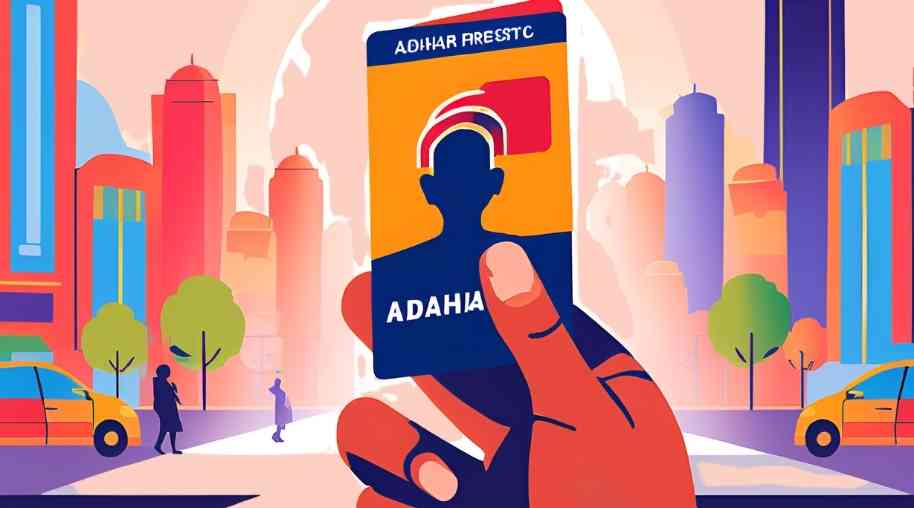UIDAI Full Form - Unique Identification Authority of India
by Shashi Gaherwar
0 1069
UIDAI: The Backbone of India’s Digital Identity System
The Unique Identification Authority of India (UIDAI) is the governing body responsible for issuing Aadhaar, a unique 12-digit identity number assigned to Indian residents. Established in 2009, UIDAI plays a crucial role in India’s digital transformation by enabling seamless identity verification, improving access to government schemes, and reducing fraud.
Let’s explore the world of UIDAI and Aadhaar and how they have revolutionized digital identity in India.

The Origin and Objectives of UIDAI
UIDAI was established under the Aadhaar (Targeted Delivery of Financial and Other Subsidies, Benefits, and Services) Act, 2016 to provide every Indian resident with a unique identity. The key objectives of UIDAI include:
- Providing a unique and verifiable digital identity to residents
- Enhancing security and reducing identity fraud
- Enabling direct benefit transfers (DBT) for subsidies and welfare schemes
- Promoting financial inclusion through e-KYC (electronic Know Your Customer)
- Supporting digital governance and online authentication services
Aadhaar: India’s Digital Identity
Aadhaar is a biometric-based identification system that uses fingerprint and iris scans along with demographic details. It has become the foundation of various digital services and financial transactions. The Aadhaar card serves multiple purposes, including:
- KYC Verification: Used by banks, telecom providers, and financial institutions to verify identity digitally.
- Subsidy Benefits: Helps in the direct transfer of subsidies such as LPG, scholarships, and pensions.
- Digital Transactions: Enables Aadhaar-based payments for secure financial transactions.
- Government Services: Aadhaar is mandatory for various schemes like MNREGA, PM-KISAN, and PDS (Public Distribution System).
Services Offered by UIDAI
UIDAI provides various services to ensure seamless Aadhaar management and authentication:
- Aadhaar Enrollment & Update: Residents can enroll for Aadhaar at authorized centers by providing demographic and biometric details. Additionally, UIDAI allows updates in case of changes in name, address, date of birth, or mobile number.
- Aadhaar Authentication: UIDAI offers authentication services through biometric (fingerprint/iris) and OTP-based verification. This enables secure transactions and prevents identity fraud.
- e-KYC for Businesses: UIDAI’s e-KYC service allows businesses and financial institutions to verify customers digitally, reducing paperwork and making the process faster and more efficient.
- Aadhaar-enabled Payment System (AePS): AePS allows users to perform banking transactions using Aadhaar authentication. It facilitates cash withdrawals, deposits, balance inquiries, and fund transfers without the need for a debit card or PIN.
- mAadhaar Mobile App: UIDAI provides the mAadhaar app, which enables residents to access their Aadhaar details digitally, download e-Aadhaar, and use QR code-based authentication.
Benefits of Aadhaar and UIDAI’s Digital Initiatives
UIDAI has transformed identity verification in India, bringing multiple benefits:
- Eliminating Identity Fraud: Since Aadhaar is biometric-based, it prevents duplication and fraudulent identities, ensuring benefits reach the right individuals.
- Seamless Banking & Financial Inclusion: Aadhaar-linked bank accounts enable Jan Dhan Yojana beneficiaries to receive subsidies and government payments directly, promoting financial inclusion.
- Streamlining Subsidy Transfers: With Aadhaar authentication, the government can eliminate ghost beneficiaries and ensure that subsidies reach genuine recipients, saving crores in leakages.
- Ease of KYC & Digital Transactions: Aadhaar-based e-KYC reduces paperwork and makes it easier for individuals to open bank accounts, get SIM cards, and access financial services seamlessly.
- Enhanced Security & Digital Governance: Aadhaar authentication provides an additional layer of security for digital transactions, improving governance and reducing bureaucratic inefficiencies.
Challenges and Criticisms of UIDAI
Despite its advantages, UIDAI and Aadhaar have faced criticisms:
- Privacy and Data Security Concerns: Critics argue that Aadhaar’s extensive data collection raises privacy risks. While UIDAI ensures encryption and security measures, concerns about data breaches persist.
- Exclusion Issues: Certain marginalized communities, senior citizens, or individuals with worn-out fingerprints may face difficulties in biometric authentication.
- Dependence on Aadhaar for Essential Services: Linking Aadhaar to essential services has sometimes led to unintended exclusions, where individuals have been denied rations or benefits due to authentication failures.
Future of UIDAI and Aadhaar
UIDAI continues to evolve with advancements in digital security, encryption, and authentication mechanisms. Future initiatives may include:
- Improved Biometric Technology: Enhanced AI-based biometric verification to address authentication failures.
- Offline Aadhaar Verification: Using QR codes or Virtual IDs for authentication without exposing Aadhaar numbers.
- Blockchain Integration: Ensuring more secure and decentralized identity verification.
UIDAI has revolutionized digital identity verification in India, enabling millions of residents to access essential services seamlessly. Despite challenges, Aadhaar remains an essential pillar of India’s digital governance, financial inclusion, and subsidy distribution. As UIDAI continues to innovate, Aadhaar’s role in transforming the nation’s digital infrastructure will only strengthen further.
Further Learning Resources
If you’re passionate about building a successful blogging website, check out this helpful guide at Coding Tag – How to Start a Successful Blog. It offers practical steps and expert tips to kickstart your blogging journey!
For dedicated UPSC exam preparation, we highly recommend visiting www.iasmania.com. It offers well-structured resources, current affairs, and subject-wise notes tailored specifically for aspirants. Start your journey today!

Share:








Comments
Waiting for your comments